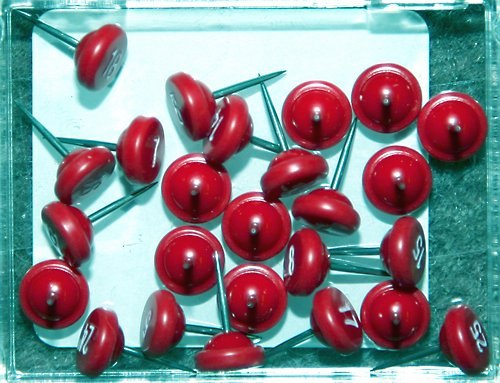Japanese Parts Paralysis: Toyota Drowns In A Sea Of Red Pins

After the March 11 quake, when the office buildings stopped shaking, Toyota told its 500 staffers in Purchasing to contact suppliers. Each damaged supplier received a red pin on a large map of northeastern Japan. Soon, the map was swamped by a tsunami of red pins. Some suppliers “suffered the complete destruction of their factories,” writes The Nikkei [sub], “and were unable to determine how many of their employees were still alive.”
With more than 10,000 dead, more than 16,000 missing, and whole towns razed in the Tohoku area, many shops are now believed to be at the bottom of the furious sea.
“The word ‘ordeal’ does not even convey the gravity of the situation,” Toyota President Akio Toyoda says.
A Fukushima supplier sent an e-mail, regretting that the company “will no longer be able to fill Toyota’s orders. Please find another supplier.” In a gesture of surrender with honor, the supplier offered its trade secrets to a new company that is able to deliver.
Last Thursday, the flood on the map had somewhat receded, and the number of red pins on the map was down to one third. Even one pin can stop the line. Currently, Toyota is short at least 500 items, mostly electronic and rubber parts, the Japanese edition of Reuters says.
Yesterday, Toyota restarted the production of the Prius and two Lexus hybrids – at 50 percent capacity. Other cars will follow gradually by mid-April or later, if and when materials and parts become available.
Other car companies suffer similarly. Even after repairs have been made and new suppliers have been found, power outages will plague the industry for the rest of the year, possibly longer.
The word ‘ordeal’ does not even convey the gravity of the situation.

Bertel Schmitt comes back to journalism after taking a 35 year break in advertising and marketing. He ran and owned advertising agencies in Duesseldorf, Germany, and New York City. Volkswagen A.G. was Bertel's most important corporate account. Schmitt's advertising and marketing career touched many corners of the industry with a special focus on automotive products and services. Since 2004, he lives in Japan and China with his wife <a href="http://www.tomokoandbertel.com"> Tomoko </a>. Bertel Schmitt is a founding board member of the <a href="http://www.offshoresuperseries.com"> Offshore Super Series </a>, an American offshore powerboat racing organization. He is co-owner of the racing team Typhoon.
More by Bertel Schmitt
Latest Car Reviews
Read moreLatest Product Reviews
Read moreRecent Comments
- Carson D I thought that this was going to be a comparison of BFGoodrich's different truck tires.
- Tassos Jong-iL North Korea is saving pokemon cards and amibos to buy GM in 10 years, we hope.
- Formula m Same as Ford, withholding billions in development because they want to rearrange the furniture.
- EV-Guy I would care more about the Detroit downtown core. Who else would possibly be able to occupy this space? GM bought this complex - correct? If they can't fill it, how do they find tenants that can? Is the plan to just tear it down and sell to developers?
- EBFlex Demand is so high for EVs they are having to lay people off. Layoffs are the ultimate sign of an rapidly expanding market.


































Comments
Join the conversation
I really wonder how things like factory locations will be different when all of it is rebuilt. I'm sure they will figure it out. Damn.
Building anything on the ocean's edge is actually a very bad idea long term. Over the ages the ocean will always have its way with the land. One of the paradoxes of human society is that we are drawn to the water's edge, and yet that is where the geography is most dangerous to permanent settlements. Rivers will periodically flood, oceans will give us massive coast line gobbling storms and lakes occasionally spill out over their boundaries.
The only surprising thing is that we seem to be surprised every time this happens!